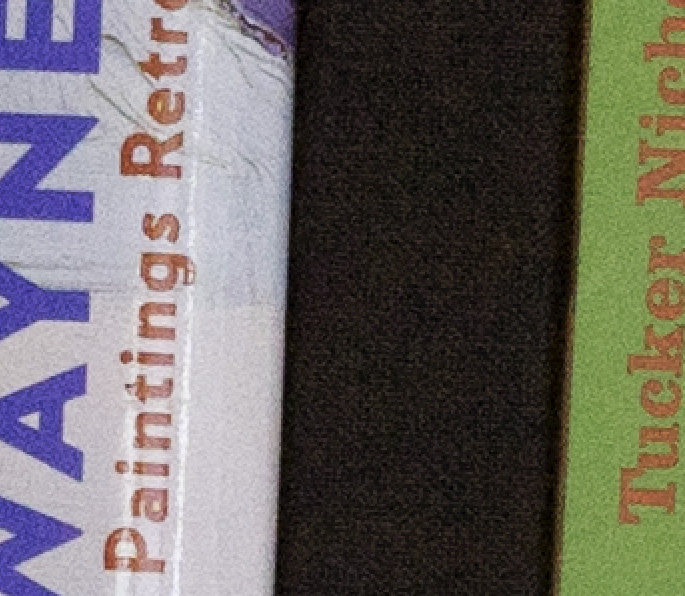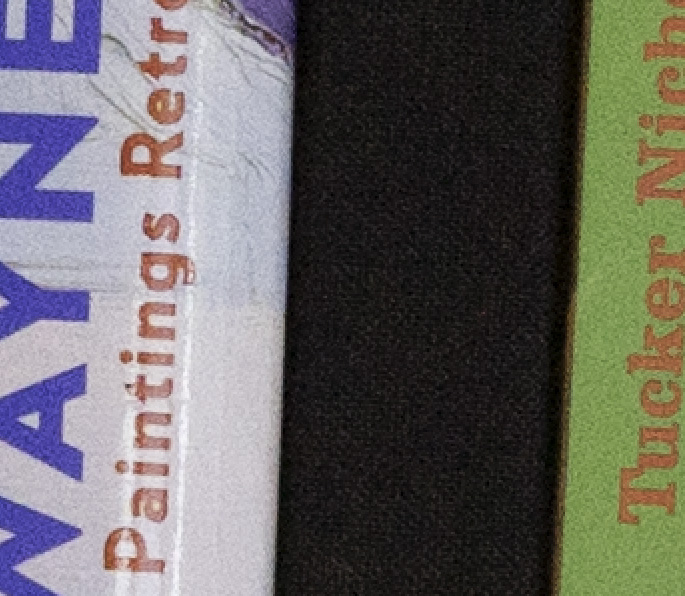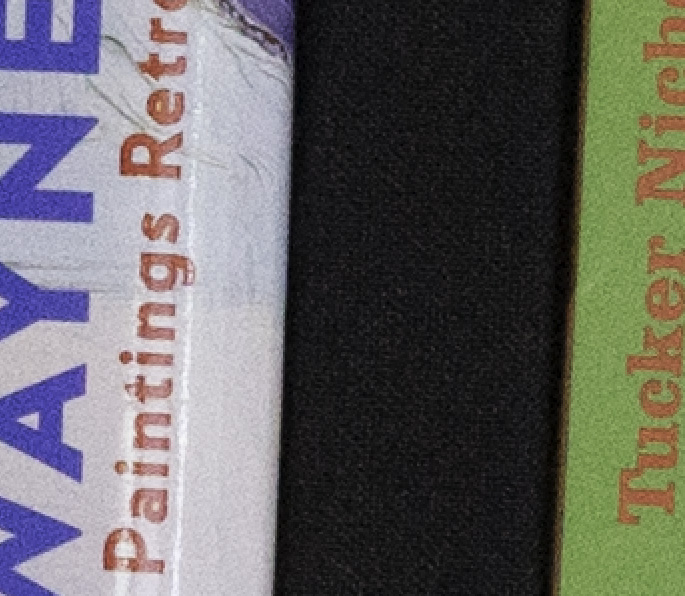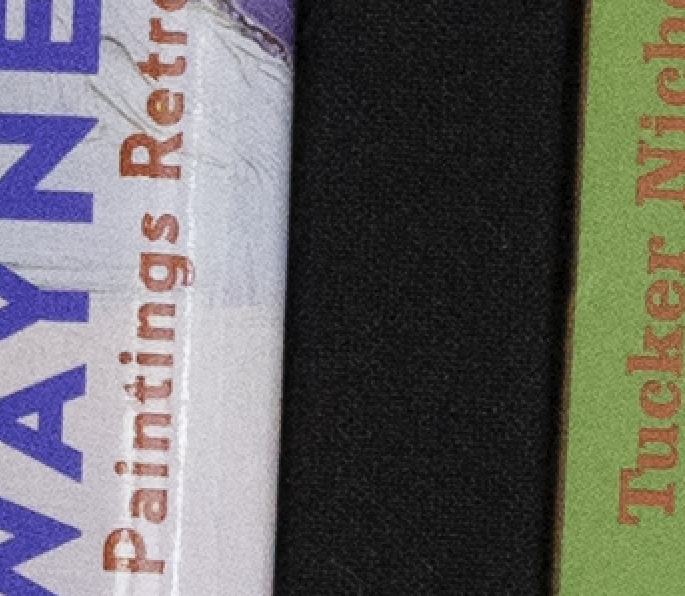I zoomed in even further on the images from the preceding post, and doubled the size in both directions using nearest neighbor, so that single pixels become 2×2 blocks.
ISO 100:
ISO 200:
ISO 400:
ISO 800:
ISO 1600:
ISO 3200:
If I get picky, I can say that the noise in the ISO 100 image, the one pushed by five stops, is a tad worse than the others.
This is a good example of an “ISO-less” camera.
Note: because of haste on my part in the first place, and laziness now, the images in this post, and several posts in this series, are in the ProPhotoRGB color space. They won’t look right unless you have a color-managed browser. Not sure if you do? Take this simple test.






Jim, very nice to see this!
I posted similar results earlier today here:
http://www.flickr.com/photos/leicasonyzeiss/
with kind regards,
Herb
Looks like there is a lot more red in the black book at iso 100. I suspect its not there at ISO1600 due to sony doing some chromo noise reduction on the raw. Are there embedded colour profiles as it displays very differently in my browser compared to any other programme?
Andrew, these photos are all in ProPhoto RGB, and are tagged. You’ll need a color-managed browser to see them properly. My bad; I should have converted them to sRGB. I’ll make a note in the post itself.
Jim